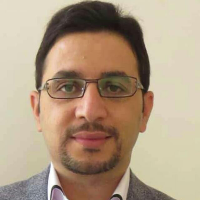Evaluation of the Vulnerable Factors of Occupational Violence against Practitioner Medical Personnel in the Emergency Units of the Training Hospitals of Arak City
Author(s):
Abstract:
Background And Aim
Occupational violence increasingly has been known as a problem in health care system. Emergency personnel, because of direct contact with patients and their relatives are exposed of the most invasions. Multiple refers to emergency unit than other hospital parts increase threat occurrences, physical and verbal violence and cause to physical and mental injury in medical personnel. In Gerberich et al viewpoint, working in ICU (intensive care unit), psychological and emergency unit is of important factors for exposure of violence. This study aims to determine the vulnerable factors of occupational violence against practitioner medical personnel in the emergency units of training hospitals of Arak city.Materials And Methods
In this descriptive-sectional study, 108 of practitioner medical personnel of the emergency units were studied in verbal and physical violence in 1394. Studied society were practitioner medical personnel of emergency unit of training hospitals of Vali-Asr, Amir- Almumenin and Amir-Kabir of Arak. Entry measures were self-desire of personnel in all educational levels and occupational grades with one year work experience in current unit in turning shift. In order to collect information of violence in work place questionnaire in health units were used which include four parts (demographic information, threat, verbal and physical violence). This questionnaire is derived from standardized questionnaires of international labor office, WHO, international council of nurses, public services international which are balanced based on environmental and social conditions and its reliability and validity were confirmed. Data were analyzed by SPSS software version 21.Ethical Considerations: This paper is a part of issued investigational plan of medical sciences of Arak University, by ethical committee confirmation of IR.ARAKMU.REC.1394.148. The goal of study was explained for participants and secrecy and anonymity were ensured to them. Also, verbal satisfaction was obtained from medical personnel for contribution in study.
Findings: Participants had average age of 31.45±6.26 years, total work experience mean 6.85±5.09 years and work experience mean 3.49±3.22 years in emergency unit. 28.7% of medical personnel were exposed of physical violence and 77.1% of them were exposed of verbal violence. 17.9% of participants reported verbal violence very much, 20.2% moderate and 36.9% low or very low. The most motivating reason of violence was crowdedness of unit and the most factors resulted to physical and verbal violence was patient's relatives. The most physical violence factor (856.4%) and verbal (60.5%) were for relatives.
Conclusion
Findings showed high prevalence of violence, especially verbal violence against medical personnel. According to occupational characteristics of practitioner personnel in emergency unit, it can be said that violence emergence in work place is inevitable and impossible work. Therefore, the best approach is to identify amount and vulnerable factors in regions violence and to program for reducing its occurrences as low as possible. It should be noted that workplace violence is a multidimensional problem which its destructive dimensions has adverse effects on emergency personnel performance and also on hospital performance. Thus, creating a supportive environment, preparing continual training programs, financial resources and enough human force, restricting visit hours, also observation and answering in patients care are recommended in order to successful performing care programs. In this study, violence was forced from patient relatives more which can be prevented by managing, planning and public training.Keywords:
Language:
Persian
Published:
Journal of Medical Ethics, Volume:11 Issue: 39, 2017
Pages:
55 to 61
https://magiran.com/p1694021
مقالات دیگری از این نویسنده (گان)
-
Patient Safety Attitude in Iranian Health Care Workers: A Systematic Review
Sayedeh Somayyeh Mousavipour, Mohammad Golitaleb, Mansoreh Karimi Kia, Fatemeh Ali Akbari, Kosar Yousefi, Ali Sahebi*
International Journal of Musculoskeletal Pain prevention, Winter 2022 -
Stigma; A Major Challenge Amid the Covid-19 Pandemic
Razieh Mokhtari,
International Journal of Preventive Medicine, Jun 2021



